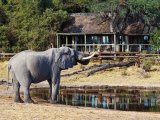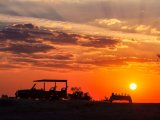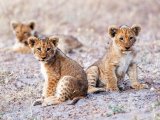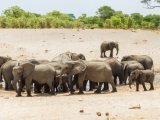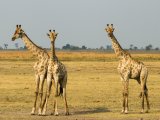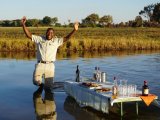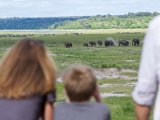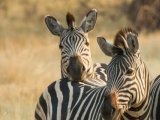Botswana is widely regarded as having some of the best wilderness and wildlife areas on the African continent. Most of its national parks are non-fenced, allowing animals to roam wild and free. Botswana is the last stronghold for a number of endangered species. This makes your safari experience even more memorable! Experience the stunning beauty, the unimaginable vastness, the isolation and other-worldliness, the astoundingly prolific wildlife of the best kept African secret - Botswana.
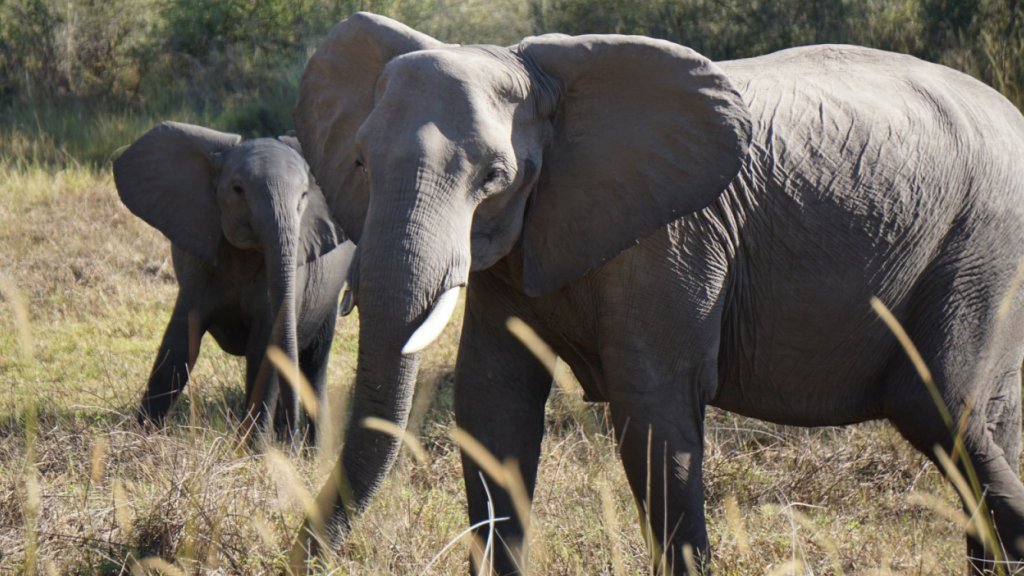
Botswana
General Information
General Facts:
Size (land area): 566,730 sq km (218,815 sq miles). Botswana is roughly the size of Texas
Border countries: Namibia, South Africa, Zambia & Zimbabwe
Elevation extremes: Lowest point: Junction of the Limpopo and Shashe Rivers 513 m (1,683 feet); the highest point is Tsodilo Hills 1,489 m (4,885 feet) above sea level.
Population: 2,249,104 belonging to the following Ethnic groups: Tswana (or Setswana) 79%, Kalanga 11%, Basarwa 3%, other, including Kgalagadi and white 7%
Religion: Christian 79.1%, Badimo 4.1%, other 1.4% (includes Baha'i, Hindu, Muslim, Rastafarian), none 15.2%, unspecified 0.3%
Languages: English (official) 2.8%, Setswana 77.3%, Sekalanga 7.4%, Shekgalagadi 3.4%, Zezuru/Shona 2%, Sesarwa 1.7%, Sembukushu 1.6%, Ndebele 1%, other 2.8%
Entry Requirements: A passport with at least six months of validity remaining is required. The U.S. citizens are permitted to stay up to 90 days total within a 12-month period without a visa.
Source: The World Factbook
Currency
Botswana's currency is the Pula (meaning ‘rain’ in Setswana). It is divided into 100 thebe (meaning ‘shield’ in Setswana). Travelers' cheques and foreign currency may be changed at banks, bureaux de change, and authorized hotels. The US dollar, Euros, British Pound, and the South African Rand are the most easily convertible currencies. Automatic teller machines accept foreign visa cards but are mostly found in larger towns and cities. Cultural sites and community art and craft outlets usually only accept cash.
Banks
Seven main commercial banks, as well as a number of foreign exchange bureaux, operate in Botswana.
Banking hours are:
Monday to Friday 8:30 am - 3:30 pm
Saturday 8:30 am to 10:45 am
Credit Cards
Major credit cards, such as MasterCard and Visa, are accepted throughout the country, in most hotels, restaurants, retail outlets, and safari companies. However, shops in remote areas and service stations may only accept cash.
Communication
Most of Botswana is networked by automatic telephone exchanges, with public telephones in even the most remote places.
The International access code in Botswana is 00. When calling international to Botswana, dial +267.
Cellular phone coverage is provided Mascom, Orange and be Mobile. Mobile Sim cards are available in most supermarkets and service stations. All major towns in Botswana are network covered, as well as portions of the national highway.
Mobile networks in Botswana offer various services to their subscribers, including Internet access, fax, and International Roaming. It is always important to seek advice about network services so as to choose one that will work for you.
Using a cellular phone whilst driving is against the law in Botswana, and liable to a P300 fine. Earphones or hands-free devices are recommended.
Travel Insurance
It is essential for visitors in remote areas of Botswana to have a comprehensive medical insurance policy to provide coverage for the treatment of serious illnesses/accidents, and if required, medical evacuation. Personal effects insurance is also advisable. Check that your insurance policy will be accepted by service providers in Botswana. Ensure that you are treated by licensed medical personnel to enable you to provide your insurance company with appropriate documentation and receipts. Reasonably priced medical services are available at government clinics and hospitals throughout the country. Private medical practitioners are available in the cities and major towns, such as Gaborone, Francistown, and Maun. Gaborone Private Hospital is the largest private hospital in Botswana. The hospital requires medical coverage or cash payment in advance where medical coverage is not available.
Drinking-Water
Tap water throughout the country is safe to drink. Bottled mineral water is readily available in most shops and supermarkets and at camps and lodges. Tourists traveling by road are advised to carry sufficient water at all times.
Recommended Vaccinations
If you are traveling to Botswana from areas infected with Yellow Fever, you must have a valid Yellow Fever vaccination certificate. Otherwise, no other immunizations are required. However, it would be wise to have an updated TPD (tetanus, polio, diphtheria) vaccine and a Hepatitis A vaccine. For a full list of recommended vaccination by the CDC please click here.
Luggage Restrictions for Regional Flights
It is advisable to adhere to the luggage restrictions for both scheduled international, domestic and charter flights: 20kgs (44lbs) on domestic flights, 12kgs (26lbs) on light aircraft (including Okavango Delta charter flights), and 20kgs (44lbs) on international flights.
Shopping in Botswana
All major towns in Botswana, including Maun and Kasane, have shopping centers and supermarkets, and all basic commodities can easily be purchased. Many regional chain stores operate in Botswana. In addition, there are 24- hour convenience shops at most fuel service stations.
There is an increasing range of local arts and crafts on sale in Gaborone, Maun and Kasane and other tourist areas; they include Botswana’s renowned world-class baskets, woodcarvings, jewelry, pottery, tapestries, fabrics and clothing, glassware, and San crafts.
Value Added Tax
To claim a 12% VAT refund for the total value of goods purchased, the amount spent should be more than P5,000. In such cases, the following is required: a tax invoice stating VAT paid, your passport number and your bank account details.
It is always advisable to keep a copy of the VAT form as a record for any followup on the transaction.
VAT claims usually can be made at all major border ports and airports.
Shops
9:00 - 18:00 Monday to Friday
9:00 - 15:00 Saturday
9:00 - 13:00 Sunday
What to Bring
Binoculars, torch, insect repellent, lip salve, sunscreen, sunglasses. Cosmetics, medications, and cigarettes are all available in the major towns, but if specific brand names are needed, it is best to bring enough to last your stay.
However, care needs to be taken to comply with international aviation security regulations for items in carry-on luggage. Contact your airline for details.
What to Wear
- In summer, lightweight, light-colored cotton is preferable.
- Garments of neutral colors that blend with the bush and forest are advisable for safaris and game viewing.
- Avoid synthetic materials and black clothing, as they increase perspiration and discomfort.
- Bring a lightweight jacket and/or jersey for unexpected temperature changes or rain.
- In winter, wear trousers, long-sleeved shirts/blouses, and jerseys.
- From May-August, night temperatures can fall below zero degrees Celsius, so warm jerseys and jackets are vital, especially on morning and evening game drives.
- Closed, comfortable walking shoes or gym shoes are a must in all seasons.
- Special attention should be given to protection from the sun. Bring a sunhat, good quality sunscreen, sun lotion, and polarized sunglasses.
- Wide-brimmed hats are preferable to baseball caps.
Source: Botswana Tourism
When to Travel?
Game viewing is usually at its best during the dry season - in winter (May to August) and in the hot springtime months of September and October, when the animals concentrate near rivers, pools, and waterholes. The chances of spotting lions are better just after sunrise than at other times. In summer, most of the game tends to lie up during the heat of the day, so the recommended times to set out on drives are the early mornings and late afternoons. Elephants, though, are wide-awake and active in and around the rivers in the hotter hours.
If you are not bothered by occasional rain showers, then the Green Season (November through April), offers a lower number of visitors and reduced pricing. The plains are painted with vibrant green and many animals give birth. It is a wonderful time to travel!
Travel Highlights
Central Kalahari Game Reserve
Nothing prepares you for the immensity of this reserve, nor its wild, mysterious beauty. There is the immediate impression of unending space, and having the entire reserve to yourself.
Waist-high golden grasses seem to stretch interminably, punctuated by dwarfed trees and scrub bushes. Wide and empty pans appear as vast white stretches of saucer-flat earth, meeting a soft, blue-white sky. At night the stars utterly dominate the land; their brilliance and immediacy are totally arresting.
During and shortly after good summer rains, the flat grasslands of the reserve’s northern reaches teem with wildlife, which gathers at the best grazing areas. These include large herds of springbok and gemsbok, as well as wildebeest, hartebeest, eland, and giraffe. At other times of the year, when the animals are more sparsely distributed, the experience of traveling through truly untouched wilderness, of seemingly unending dimensions, is the draw.
The landscape is dominated by silver Terminalia sand veldt, Kalahari sand acacias, and Kalahari apple leaf, interspersed with grasslands and dotted with occasional sand dunes, pans, and shallow fossil river valleys.
Chobe National Park
Whether arriving by air or road, the first glimpse of the river – deep and dazzling in the sandy terrain – is always breathtaking. It appears as a swathe of brilliant, peacock blue ribbon, winding its way through the tiny town of Kasane, and ensuing wilderness – the Chobe National Park.
Undoubtedly one of Africa’s most beautiful rivers, the Chobe supports a diversity and concentration of wildlife unparalleled anywhere else in the country.
The most accessible and frequently visited of Botswana’s big game country, the Chobe Riverfront is most famous for its large herds of elephants and cape Buffalo, which during the dry winter months converge upon the river to drink. During this season, on an afternoon game drive, you may see hundreds of elephants at one time. You may be surrounded by elephants, as the main Serondella road becomes impassable and scores of family herds cross the main road to make their way to the river to drink, bathe and play.
Take a river cruise – and you’ll experience the park, and the animals, from another vantage point. Here you’ll get up close and personal with hippo, crocodile and a mind-boggling array of water birds. Over 460 bird species have been recorded in the park, making it one of Africa’s premier venues for bird Safaris. Common species to be seen include the Sacred ibis, Egyptian Geese, the ubiquitous cormorants and darters, Spur-winged Geese, pel’s Fishing Owl, carmine Bee-eaters, most members of the kingfisher family, all the rollers, the unmistakable Fish Eagle, the Martial Eagle, and many members of the stork family.
Okavango Delta
One of the most sought after wilderness destinations in the world, the Okavango Delta gives entrance to the spectacle of wild Africa such as dreams are made of – the heart-stopping excitement of big game viewing, the supreme tranquility, and serenity of an untouched delta, and evocative scenes of extraordinary natural beauty.
A journey to the Okavango Delta – deep into Africa’s untouched interior – is like no other. Moving from wetland to dryland – traversing the meandering palm and papyrus fringed waterways, passing palm-fringed islands, and thick woodland, resplendent with lush vegetation, and rich in wildlife – reveals the many facets of this unique ecosystem, the largest intact inland delta in the world.
That the Okavango exists at all – deep within this thirstland – seems remarkable. Shaped like a fan, the Delta is fed by the Okavango River, the third-largest in southern Africa. It has been steadily developed over the millennia by millions of tonnes of sand carried down the river from Angola.
At the Delta’s lower reaches, the perennial swamps give way to seasonal swamps and flooded grasslands. To the southeast, the third vegetation region becomes evident, as it changes to true dryland. There are three major landmasses here: the Matsebi Ridge, Chief’s Island, and the Moremi Tongue. Here the vegetation is predominantly mopane, acacia and scrubs bush and, the land is dotted with pans. It is to this region that large numbers of mammals retreat during the dry winter months.
It should be noted, however, that game viewing very much depends on the season, and water and food availability.
Source: Botswana Tourism
Suggested Journeys
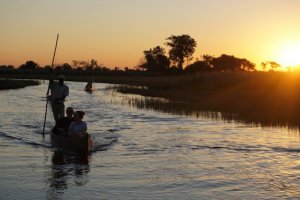 Best of Botswana - Featuring Desert & Delta Safaris
Best of Botswana - Featuring Desert & Delta Safaris7 Days / 6 Nights • Daily arrivals in Botswana, January and March through December
Embark on one of the most rewarding Safaris trips in Africa! Cover 3 Eco-Systems and stay at 3 breathtaking Safari Camps. Experience the arid Savute Region, the Okavango Delta, and the mighty Chobe River!
This journey offers some spectacular game viewing opportunities that allow you to get up close and personal with some of nature’s biggest personalities. A perfect combination of 3 different lodges that cover a diversity of ecological systems within Botswana.
The Chobe National Park is located in the Northern part of Botswana and lies along the Chobe River, which borders Botswana and Namibia. The Park is the second-largest in Botswana and is known for its superb game viewing all year round, as it has one of the largest populations of game on the African continent. Chobe is probably best known for its impressive Elephant herds. The Chobe River supports the largest concentration of elephants found anywhere in Africa and it is not uncommon to encounter herds in excess of a hundred animals.
Described as 'the jewel of the Kalahari’, the Okavango Delta – a tranquil and isolated oasis set in the harsh and arid surroundings of Botswana’s bush and desert – is widely regarded as one of Africa's best safari destinations, with its rich diversity of fauna and flora. The delta is one of the largest and most important inland wetlands of the world, with 2500 species of plants, 65 fish species, 20 large herbivores and their attendant predators, and more than 450 species of birds.
The Savuti Channel has a fascinating history of flooding and drying up independently of good rainy seasons and flood levels elsewhere – a mystery that has intrigued geologists and other researchers for many years. It is generally believed that tectonic activity deep below the Kalahari's sand bed is responsible. Others argue that its flow is primarily dependent upon the rainfall in the Angolan highlands which feeds the Okavango and Chobe River basins and the channel. The Savuti area offers great game viewing at certain times of the year. The annual Zebra migration is closely followed by many Lion prides. Good sightings of Cheetah and Leopard are possible and the endangered Wild Dog also occurs here. Savuti is famous for its large concentrations of Elephants that congregate around the waterholes, making game-viewing exceptional.
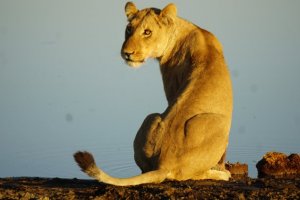 Safari Legends by Private Air - South Africa, Botswana & Zimbabwe.
Safari Legends by Private Air - South Africa, Botswana & Zimbabwe.11 Days / 10 Nights • June 1-11, 2025 & August 30-September 9, 2025; Small Groups departures
The "Safari Legends by Private Air" Journey offers an exclusive 11-day expedition across Africa’s renowned wildlife destinations, leveraging private air travel to enhance the experience.
This limited capacity tour, accommodating only 19 guests, features prime wildlife viewing in South Africa's MalaMala Game Reserve, Botswana’s Mashatu Game Reserve and Okavango Delta, and Zimbabwe's Victoria Falls. The itinerary includes walking safaris, off-road game drives, night drives, mokoro excursions, and river cruises, all tailored to provide intimate wildlife encounters, including the Big Five and other diverse species like African wild dogs, giraffes, and crocodiles. The use of private air travel ensures efficient, comfortable, and secure transfers between remote locations, maximizing time spent in each reserve and offering a seamless, luxurious safari experience. Highlights of the tour also include boma dining under the stars, predator viewing, and interactions with conservationists.
Featured Properties
 Camp Okavango, Okavango Delta
Camp Okavango, Okavango DeltaCamp Okavango is a unique, exclusive and eco-sensitive African safari camp situated on the remote Nxaragha Island. A hidden treasure, in the heart of the permanent Okavango Delta, assures its guests of an unparalleled year-round water wilderness experience.
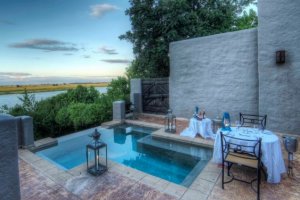 Chobe Game Lodge
Chobe Game LodgeThe only permanent game lodge situated within the famous Chobe National Park, Chobe Game Lodge is Botswana’s premier venue for guests looking for a perfect base from which to explore the Chobe National Park and the Chobe River. This five-star Lodge is fully ecotourism certified by Botswana Tourism Organization.
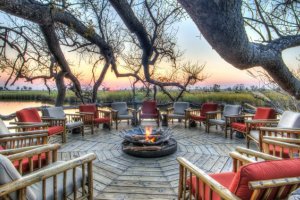 Camp Xakanaxa, Moremi Game Reserve, Okavango Delta
Camp Xakanaxa, Moremi Game Reserve, Okavango DeltaThe prime location of Camp Xakanaxa (pronounced Ka-ka-na-ka) on the banks of the Khwai River on the Xakanaxa Lagoon, in the heart of the Moremi Game Reserve, makes it one of the very few safari camps that offer guests an authentic, year-round Okavango Delta land and water safari experience.
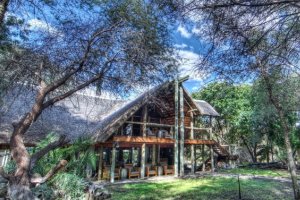 Savute Safari Lodge
Savute Safari LodgeThe Savute region and the Savute Marsh, in particular, is renowned for its intense predator encounters and exceptional game viewing making it one of Botswana’s most popular wildlife destinations.
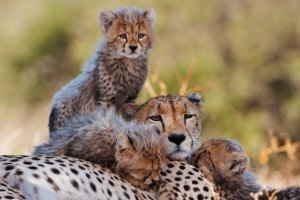 Mashatu Lodge - Mashatu Game Reserve
Mashatu Lodge - Mashatu Game ReserveWhere Botswana, Zimbabwe, and South Africa meet, you will find one of the brightest stars in Botswana’s tourism universe, Mashatu Game Reserve. 31000 ha (76600 ac) private game reserve in Botswana allowing for off-road driving, night drives, and open safari vehicles. The reserve is the home of the Largest herds of free-roaming elephants on a private game reserve in Africa.
